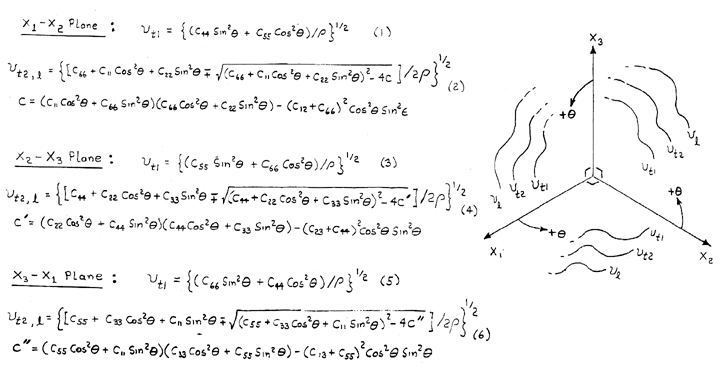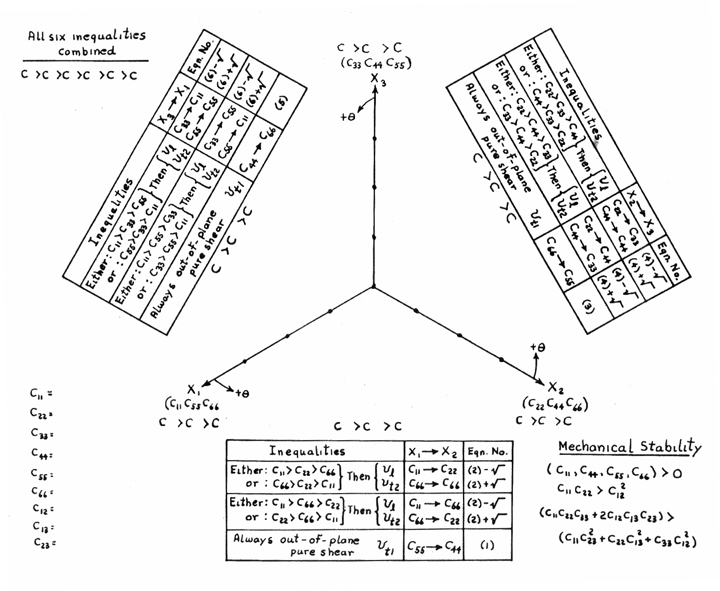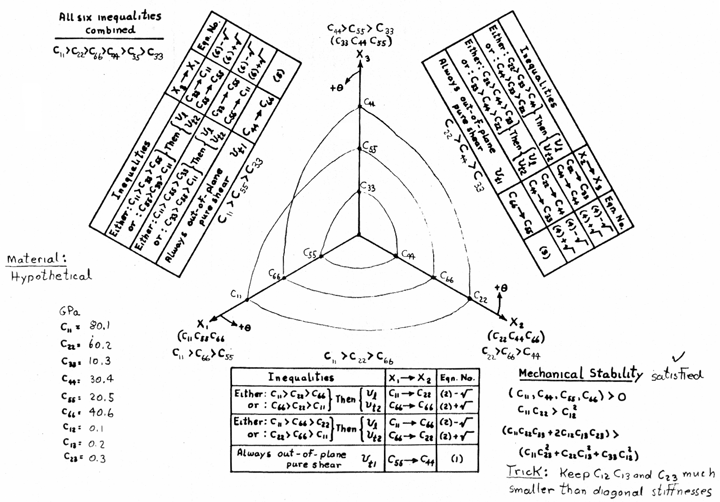
Ronald D. Kriz, Associate Professor
Engineering Science and Mechanics
Virginia Polytechnic Institute and State University
Blacksburg, Virginia 24061
Solutions are written interms of wave velocities with subscripts "l" for the fastest longitudinal wave, "t1" for the transverse wave that is always pure shear out-of-plane, and "t2" for the other transverse wave that is mixed mode. Only the intersection of the wave surfaces with the three principle orthogonal planes need to be considered.

A template shown below demonstrates how these equations can be used to draw all possible geometric combinations of wave surface intersections with the principle orthogonal planes. Hence the inequalities only involve the diagonal terms of the stiffness matrix and are the necessary and sufficient conditions that define the four possible geometries. The off- diagonal terms do not initiate bifrications of the eigenvalues (graphical intersections) but they do influence the shape of the three-dimensional wave surfaces.

Only one example is shown below that demonstrates the geometry and inequality that uniquely creates the hypothetical "Type-4" orthorhombic symmetry.
